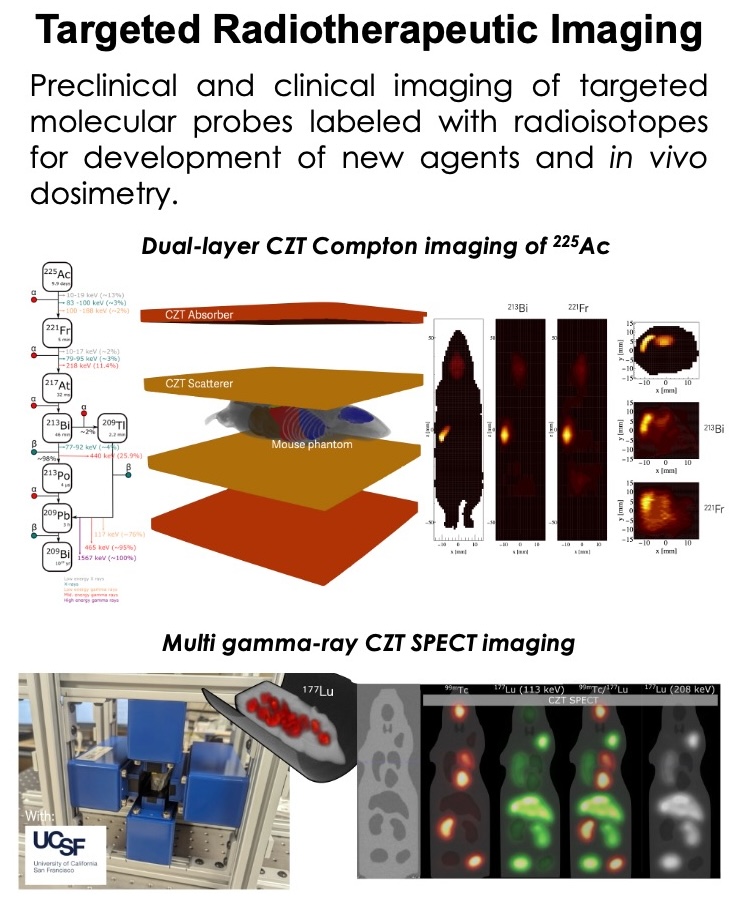 The Applied Nuclear Physics Program (ANP) has several active programs in the areas of medical and molecular imaging.
The Applied Nuclear Physics Program (ANP) has several active programs in the areas of medical and molecular imaging.
One area of strength is in the development of new detector technologies, algorithms, and techniques to advance system sensitivity and reconstructed image quality for positron emission tomography (PET). Several active projects aim to greatly advance achievable coincidence timing resolution (CTR) for time-of-flight PET (TOF-PET). TOF-PET improves reconstructed image quality through signal-to-noise-ratio (SNR) gains associated with assigning annihilation event origins to a position along system response lines between detector elements, with a resolution proportional to CTR. As CTR improves, so does image SNR gain, and improvements in PET detector CTR thereby offer effective gains in system sensitivity. State-of-the-art TOF-PET systems achieve approximately 200-400 picoseconds (ps) CTR, depending on system design, enabling ~3-6 centimeter (cm) localization along detector response lines. Our current work aims to develop clinical TOF-PET detectors that achieve ≤100 ps CTR (≤1.5 cm event localization), offering performance improvements which can more than double or quadruple sensitivity, as compared with state-of-the-art. This is achieved through new detector concepts, electronic readout strategies, and novel data-driven methods to provide estimates for 511 keV photon time of interaction. We are also developing TOF-PET detector technologies which achieve state-of-the-art CTR with lower detector material cost, enabling the potential for lower cost total-body PET scanners. The major goal of our PET instrumentation research programs is to develop translational detector concepts that enable ultra-sensitive systems that fully exploit the modality.
A second focus area is the development of new detectors and techniques for dose verification in ion cancer therapies and targeted radiopharmaceutical therapies. The program is developing new cameras for range verification in proton therapy via prompt gamma-ray imaging (PGI), which employs a novel collimator design for MeV gamma-rays. We are also leveraging ANP’s Semiconductor Detector Laboratory and expertise in semiconductor detector development to design high-resolution preclinical imaging concepts to benefit the development of radiotherapeutic agents for targeted alpha therapy.
